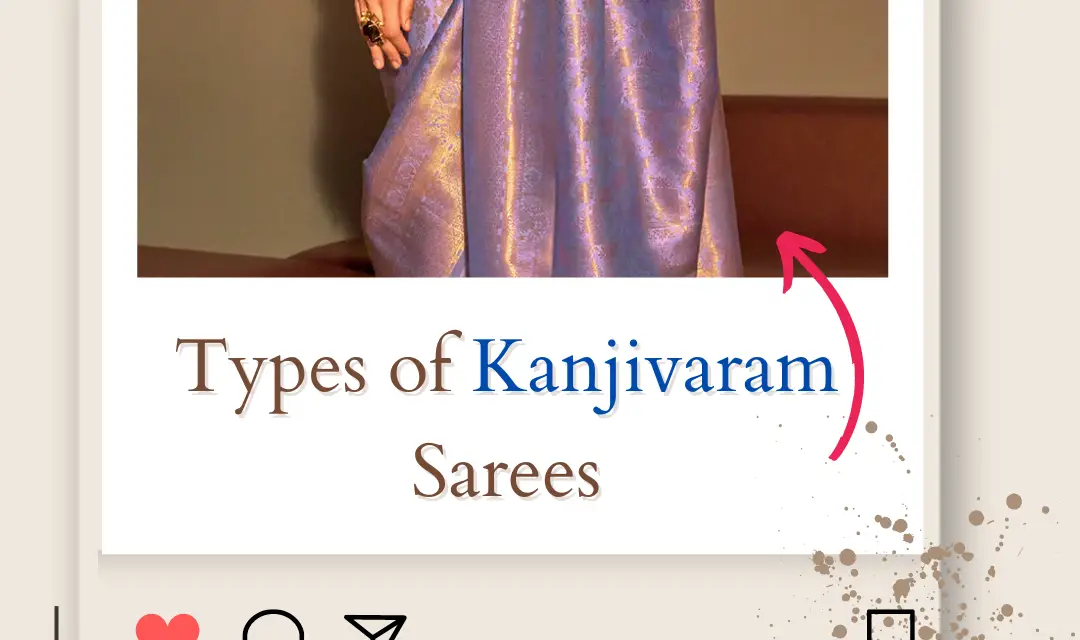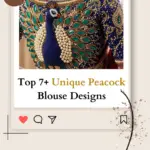Different Types of Kanjivaram Sarees You must know, that Kanjivaram sarees, woven whispers of elegance and tradition, hold a special place in the hearts of Indian women. Hailing from the temple town of Kanchipuram in Tamil Nadu, these exquisite silk masterpieces are renowned for their vibrant colors, intricate designs, and timeless beauty.
But did you know that within the world of Kanjivaram lies a diverse tapestry of styles, each with its unique charm? Let’s embark on a journey to explore the different Kanjivaram sarees that will leave you mesmerized:
Note: Always Know Your Saree Size. & choose the Branded blouse and Branded Saree option for the perfect Kanjivaram Blouse Saree Outfit.
What is the Difference Between Kanchipuram and Kanjivaram Saree?
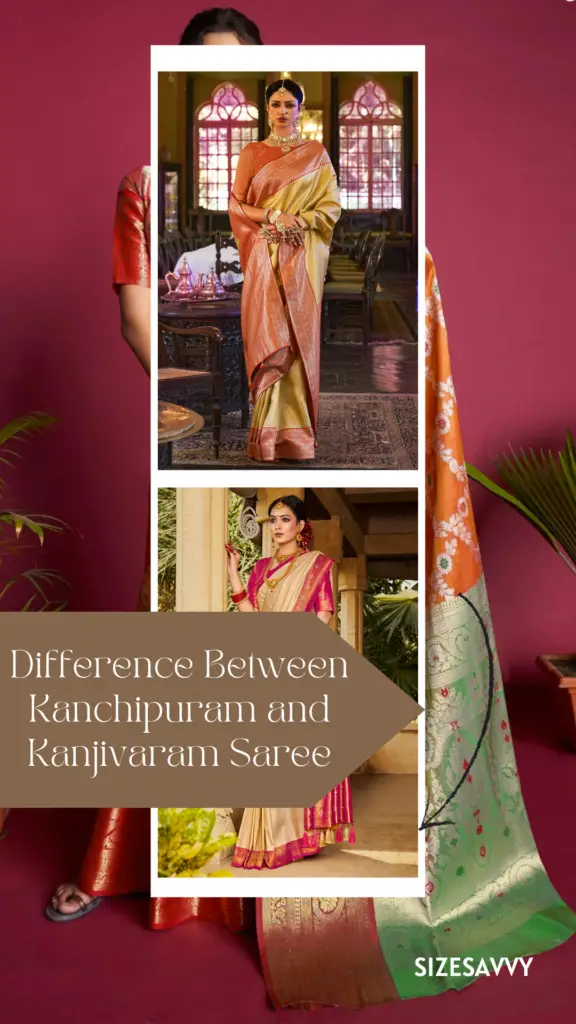
“Kanchipuram saree and Kanjivaram saree are often used interchangeably. Kanchipuram refers to the town in Tamil Nadu where these sarees are traditionally woven. Kanjivaram specifically denotes the silk sarees produced in Kanchipuram, known for their distinctive weaving and design.”
Different Types of Kanjivaram Sarees:
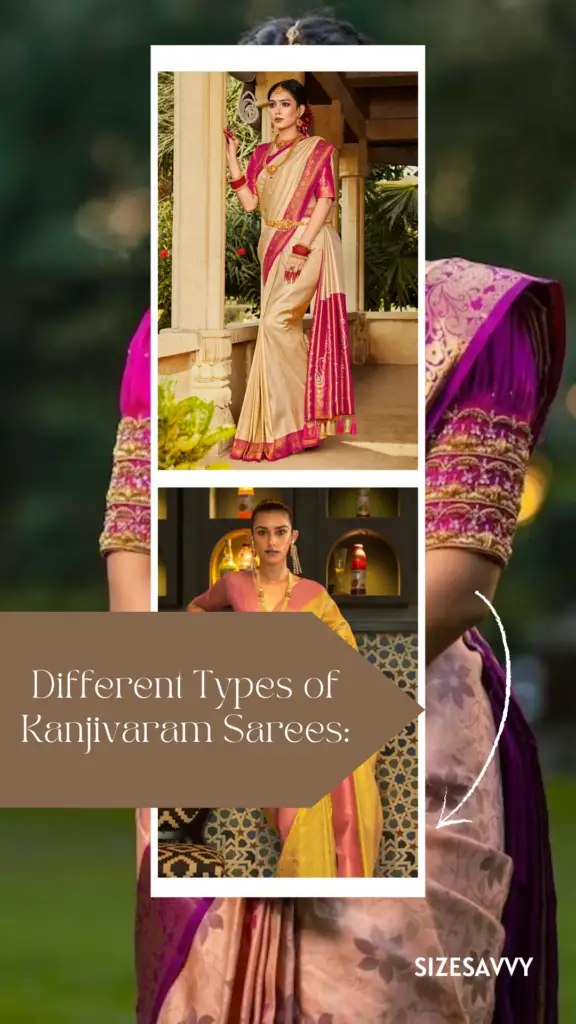
| Kanjivaram Saree Types | Kanjivaram Feature | Kanjivaram Occasions |
| Korvai | Two contrasting colors, often in jewel tones | Traditional occasions & gatherings |
| Kundan | Three contrasting colors, intricate border, and pallu | Traditional occasions |
| Contemporary | Lighter fabrics, simpler designs, wider color palette | Everyday elegance, festive gatherings |
| Bridal | Crimson or emerald green, intricate zari work, auspicious motifs | Weddings & festive |
| Pattupettu | Weddings & Festive | Intimate occasions, everyday wear |
| Tissue | A single thread, intricate zari work | Special occasions & normal |
| Jala | Shimmering net-like effect | Special occasions |
1. The Classics: Korvai and Kundan Kanjivaram
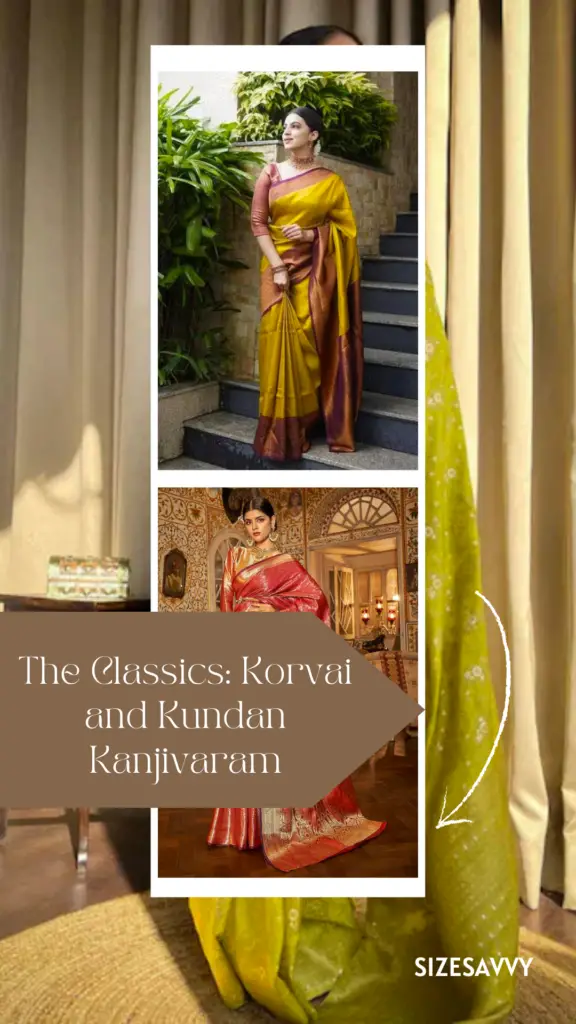
The most iconic Kanjivarams are the Korvai and Kundan varieties. Korvai, meaning “two colors,” features a contrasting border and body, often woven in rich jewel tones like ruby red, emerald green, and sapphire blue.
Kundan, meaning “three colors,” takes it up a notch with a contrasting border and pallu, creating a visually stunning interplay of hues. These sarees are perfect for traditional occasions, exuding an aura of regal sophistication.
2. The Modern Muse: Contemporary Kanjivaram
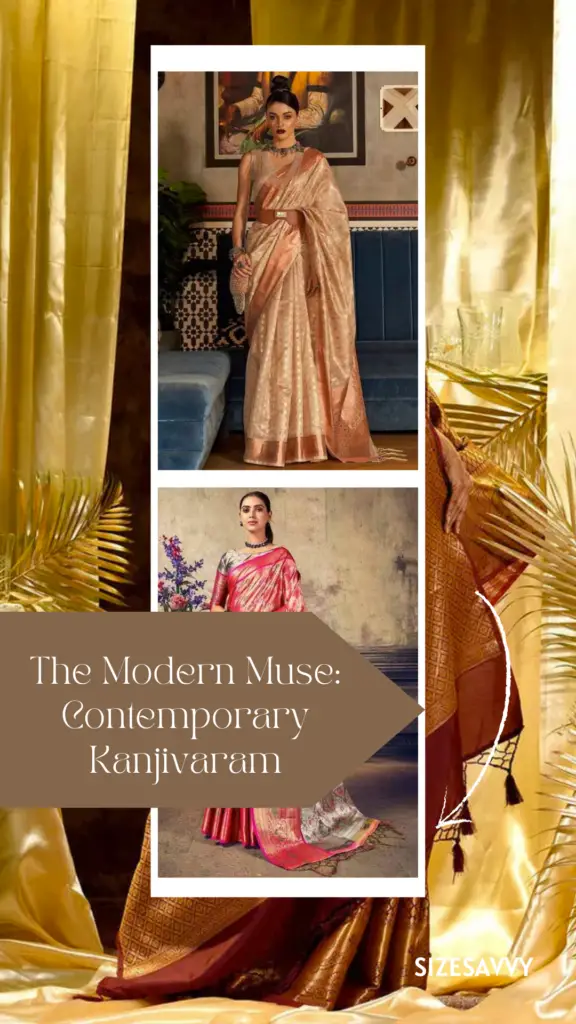
Stepping away from tradition, Contemporary Kanjivaram embraces modern sensibilities. They feature lighter fabrics, simpler designs, and a wider color palette, making them ideal for everyday elegance or festive gatherings.
Think pastel shades adorned with delicate floral motifs or geometric patterns woven with a touch of modern flair.
3. The Bridal Dream: Kanjivaram for the Aisle
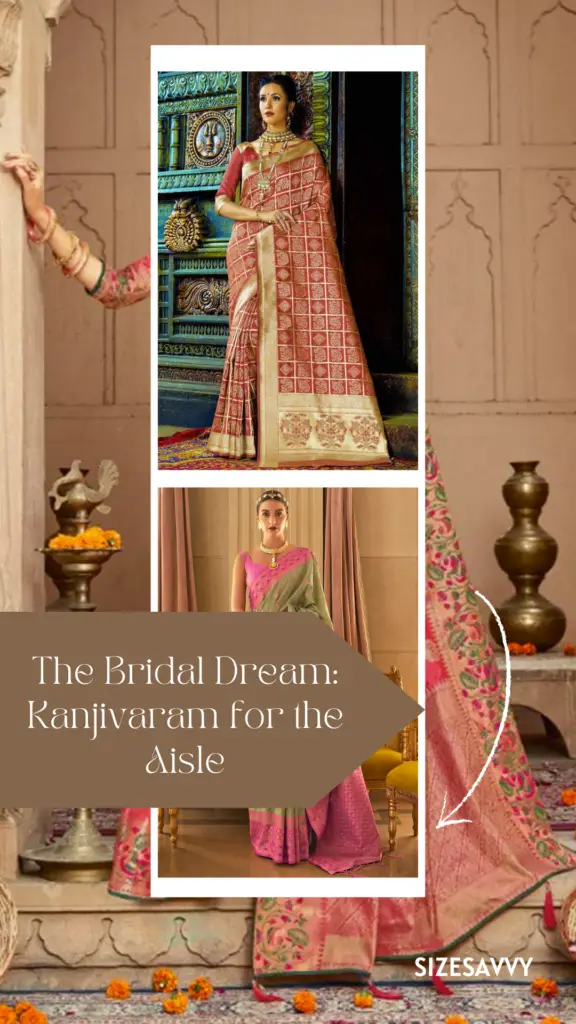
For the bride-to-be, a Bridal Kanjivaram saree is a dream come true. Imagine yourself draped in a masterpiece of crimson or emerald green, woven with intricate zari work depicting auspicious motifs like paisleys and peacocks.
These sarees are not just garments; they are symbols of love, prosperity, and a cherished heritage.
4. The Petite Perfection: Pattupettu Kanjivaram
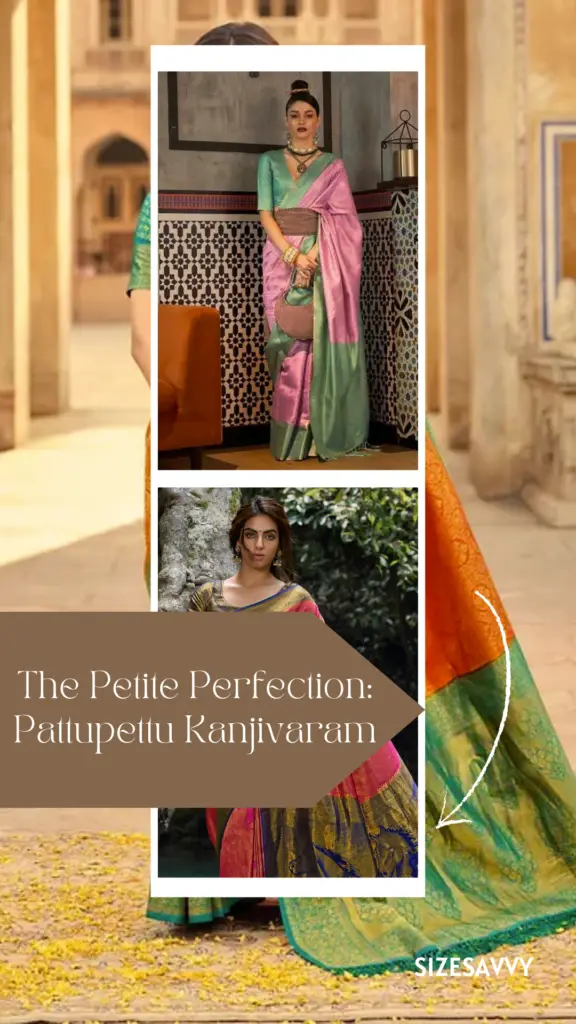
For those who appreciate understated elegance, the Pattupettu Kanjivaram is a treasure. Characterized by its delicate “buttis” (small, round motifs), these sarees are typically crafted in soft pastel shades, exuding a gentle charm. Perfect for intimate occasions or everyday wear, they add a touch of grace to any ensemble.
5. The Beyond Kanjivaram Borders: Beyond Korvai and Kundan
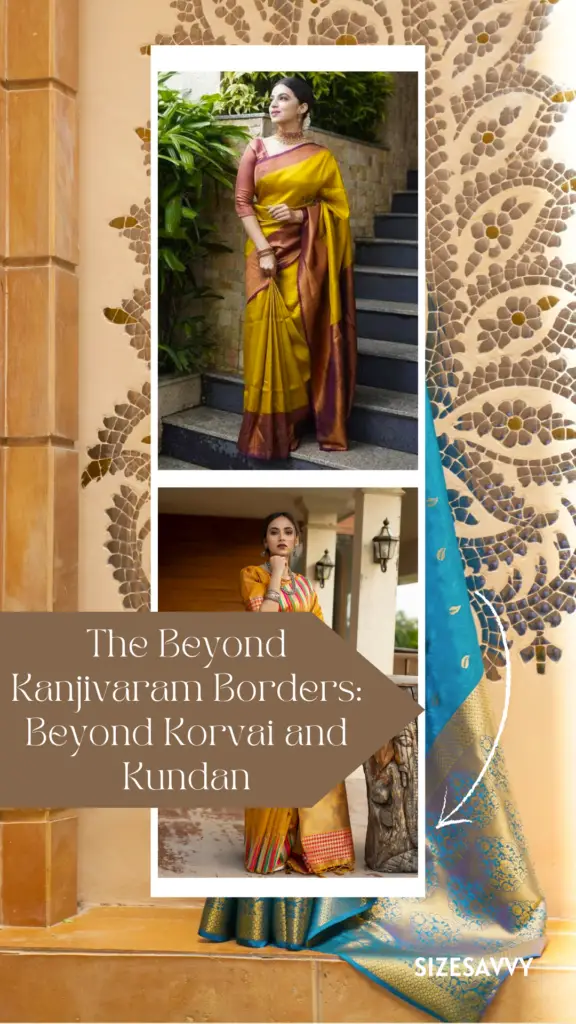
The world of Kanjivaram extends beyond Korvai and Kundan. Explore Tissue Kanjivaram, woven from a single thread and adorned with intricate zari work, or Jala Kanjivaram, featuring a shimmering net-like effect. Each weave tells a story, and each design is a testament to the artistry passed down through generations.
Choosing Your Kanjivaram:
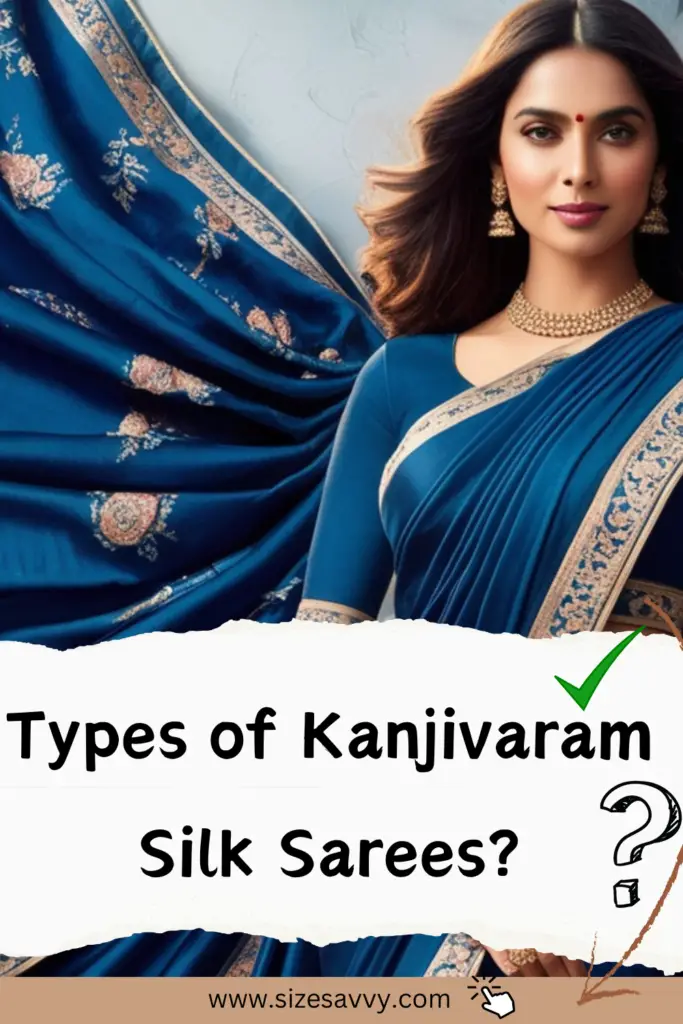
With so many options, choosing your perfect Kanjivaram can seem daunting. Consider the occasion, style, and the story you want your saree to tell.
Remember, a Kanjivaram is not just a garment; it’s an heirloom, a piece of cultural heritage, and a symbol of your unique elegance. So, embrace the diverse tapestry of Kanjivaram and find the one that speaks to your soul.
Caring for Your Kanjivaram:
- Saree Dry cleaning is recommended: This ensures proper care for the delicate fabric and zari work.
- Store carefully: Fold the saree neatly and store it away from direct sunlight and moisture.
- Avoid harsh chemicals: Use gentle detergents and natural stain removers if needed.
FAQs on Kanjivaram Types
How many types of Kanjivaram sarees are there?
“Kanjivaram sarees come in various types, each distinguished by its weaving patterns, motifs, and borders. Some popular types include Kanchipuram silk, Kora silk, Bridal Kanjivaram, and Mysore silk. Each type has its unique characteristics and is suitable for different occasions.”
Which is the best Kanjivaram saree?
“The ‘best’ Kanjivaram is subjective and depends on personal preferences, occasion, and budget. Classic Kanchipuram silk sarees with intricate zari work are often considered elegant and widely appreciated for weddings and special occasions.”
Is Pattu and Kanjivaram the same?
“Pattu is a term used to refer to silk in South India, and Kanjivaram silk sarees are a type of silk saree originating from Kanchipuram, Tamil Nadu. While Pattu generally denotes silk, Kanjivaram Pattu sarees specifically refer to the handwoven silk sarees from Kanchipuram.”
What is special about the Kanjivaram saree?
“Kanjivaram are renowned for their rich silk texture, vibrant colors, and intricate zari work. The specialty lies in using pure mulberry silk and real zari, along with the skillful craftsmanship of weavers in Kanchipuram. The durability, luster, and traditional motifs make them highly sought after.”
Why is Kanjeevaram silk costly?
“The cost of Kanjivaram silk is attributed to the quality of silk used, intricate zari work, and the labor-intensive weaving process. Pure mulberry silk, real zari (made of silver or gold), and the craftsmanship of skilled weavers contribute to the high cost of these exquisite sarees.”
How can we identify pure Kanjivaram saree?
“To identify pure Kanjivaram saree, check for a few key features. Look for the ‘Silk Mark’ certification, examine the texture of the silk (pure silk feels smooth), inspect the zari work (real zari will have a bright, metallic sheen), and consider purchasing from reputable and trusted weavers or stores.”

